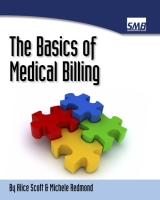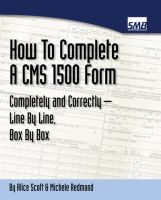Everyone seems to be adjusting well to the use of the new ‘here to stay’ NPI number. People don’t act like they don’t know what you are talking about at least! Now there just seems to be some confusion over which NPI number goes where when you are billing.
There are several places on the CMS 1500 form for NPI numbers. Box 17b is for the referring provider’s NPI number. If there is a referring provider in box 17, then you should enter his/her individual NPI number in box 17b. (If the provider is part of a group and the group has a Type II NPI number, you do not want to enter the group NPI in box 17b.) Entering the individual NPI number in box 17b is important because the purpose is to identify the individual provider who referred the patient for the services.
Box 24j is for the individual NPI number of the provider who rendered the services that are being billed. For example, if you are a physical therapy group, you would put the individual NPI number for the therapist who worked on the patient. This box is used by the insurance companies to identify the provider who performed the service, it is not used for payment purposes. Meaning that payment will not be issued to the owner of the NPI number in box 24j.
Box 32a is for the NPI number of the provider/facility entered in box 32. This would be the provider’s office or facility where the services where rendered. If you are a group with several individual providers, more than one location, you would enter the NPI number for the location that the services were provided at.
Box 33a is for the NPI number of the provider/facility entered in box 33. This is the provider/facility’s billing location. The NPI number that is entered here determines who payment is made to. Payment will be made to whoever the NPI number in box 33a is assigned to.
If you are a solo practitioner with one individual NPI number (no group NPI), one location you would enter your individual NPI number in box 24j, 32a and 33a. If you are a large group with multiple locations and one central billing office, then you would enter the rendering provider’s NPI in box 24J, the group NPI for the facility where the services were rendered in box 32a, and the central billing’s group NPI in box 33a.
If a provider works for more than one group, or works for a group but also does private practice on the side, it is important that they enter the NPI’s correctly. Their individual NPI would go in 24j to identify who performed the services. The entity that they are working under when they perform the services, or that they want the payment to be made to, goes in box 32a and 33a.
Now that everybody seems to have their NPI numbers, they just need to know how and when to use them. It may seem confusing but it’s really not too bad. You just need to take the time to understand what each box on the CMS form is used for.



